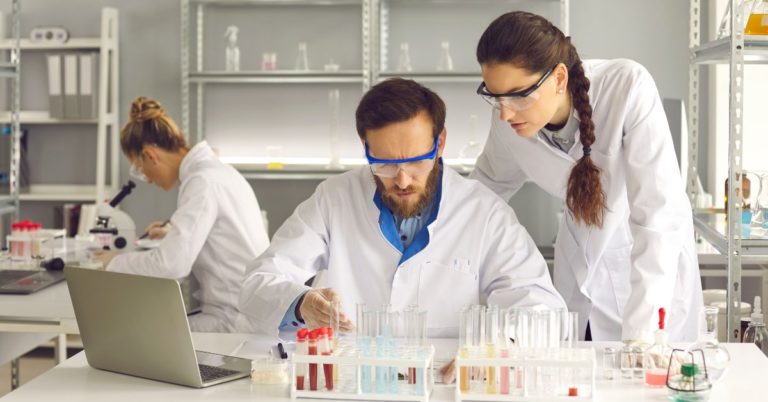Cleaning Validation Process Guidelines: How To Ensure Compliance

Cleaning validation regulations are pivotal in ensuring products’ safety, efficacy, and quality in pharmaceuticals, medical, food, and other industries. These regulations are designed to address a critical aspect of manufacturing and processing.
In an era where public health and product integrity are paramount, the importance of cleaning validation regulations cannot be overstated.
In this article, we will delve into the significance of these regulations, shedding light on their role in maintaining the highest hygiene and product safety standards while complying with stringent industry and governmental requirements.
Steps To Make Your Cleaning Validation Process Compliant
Ensuring that your cleaning validation process complies with industry standards and regulatory requirements is essential for maintaining product quality, safety, and regulatory approval. A robust cleaning validation process helps prevent cross-contamination, ensures the removal of residues, and safeguards consumers and patients from potential harm.
Planning and Assessment
From a high-level perspective, a validation master plan (VMP) should be in place that covers validation at the site, including cleaning validation. The cleaning validation lifecycle should be outlined from the information gathering process through development, validation, monitoring, and deactivation. Quality processes should also be in place to support cleaning validation activities, such as change control to assess new cleaning strategies as part of a project initiation or to assess the impact of changes to a cleaning process.
A product-equipment matrix that lists all products manufactured at the site, including active ingredients, excipients, batch size, and all product contact equipment, should be generated. If already implemented, the list should be updated as necessary when new equipment is added or if existing equipment is modified, with cleaning validation impact assessed for these changes. For further product contact equipment, design attributes that support cleaning should be verified upfront (e.g., free-draining system, pipe slope, absence of dead legs, etc.).
Cleaning Development
Cleaning development studies should demonstrate that new or modified cleaning procedures effectively remove potential bio-burden and remove product and cleaning agent residues to acceptable levels on equipment product contact surfaces. Cleaning development studies are intended to provide data to support subsequent cleaning validation studies, including cycle definition and identification of critical cleaning parameters (CCPs).
Large-scale runs should be conducted to optimize the cleaning processes and determine the right agent concentration since too little concentration may result in ineffective cleaning, while too much could result in difficulty removing the agent, potentially leading to laboratory failures, equipment damage, and/or operator safety issues.
Cleaning Development Checklist
- The cleaning approach (clean-in-place (CIP), clean-out-of-place (COP), or manual cleaning). Manual cleaning results in higher variability, making reproducibility more challenging, so this approach should be minimized.
- Cleaning agent. Note that the cleaning agent type should consider the cleaning approach (e.g., the selection of a non-foaming cleaning agent for a CIP process).
- CCP ranges and/or values for each cleaning procedure (both automated and manual processes), including, but not limited to, cleaning agent concentration and preparation instructions, cleaning times (e.g., cleaning agent contact times, step durations, automated cycle times, final rinse times), spray device parameters, water quality (e.g., potable, RO/DI, USP), water or wash temperature, wash/scrub/rinse patterns (for manual cleaning processes), cycle times and load patterns (for CIP processes), cleaning tools and use instructions, and drying and storage parameters.
- Sampling plan with worst case sampling locations
- Worst-case analyte
- Acceptance criteria
- Assembly and disassembly instructions
- Cleaning procedures/records
Cleaning Validation
Cleaning validation studies should be designed based on cleaning development results. Cleaning validation studies are intended to demonstrate that the developed cleaning processes are repeatable and reproducible, consistently cleaning equipment product contact surfaces to predetermined specifications and meeting quality attributes. Before executing a cleaning validation study, specific pre-requisites must be met, with documented evidence in place, including, but not limited to:
- Qualification or validation of all equipment, critical utilities, and automated cleaning equipment/systems used in the process and calibration of all associated instrumentation.
- Development and validation of analytical and microbiological (bioburden) test methods. Rinse and swab recovery factors must be determined on all construction materials for analytical assays.
- Implementation of SOPs defining how cleaning procedures will be validated.
- Definition of worst cases to be included in the cleaning validation studies.
- Training personnel participating in execution of the protocol and execution of cleaning procedures, including personnel qualification in swabbing and visual inspection tasks.
Cleaning Validation Protocols
Any cleaning validation should include the following:
- Visual inspection.
- Microbial testing, mainly if a manual process is used and if any potable water is used, even if the final rinse is USP or IPA.
- Active testing.
- Cleaning agent testing.
Cleaning validation should demonstrate the effectiveness and reproducibility of the cleaning process through a justified, predefined number of consecutive, successful runs. Demonstration of cleaning effectiveness after predetermined cleaning campaigns (based on several lots or times), dirty equipment hold times, and clean equipment hold times should also be performed.
Continuous Process Verification
Many sites have not implemented continuous verification programs yet; however, this aspect of cleaning validation has continued to gain more scrutiny from auditors. The FDA clearly states that a program must be in place to monitor cleaning processes and demonstrate that they are in control after cleaning validation. Verification and monitoring activities and associated frequencies under this program should be determined based on risk.
Is Your Cleaning Validation Process Compliant?
As a company, you want to make sure that your cleaning validation process is safe, effective and qualified. As we know, navigating the complexities of cleaning validation is tough, especially when implementing new strategies.
A compliant cleaning validation process helps enhance the reputation and credibility of your organization. As regulatory expectations continue to evolve, companies that proactively embrace and implement these steps will be better positioned to navigate the challenges of cleaning validation and ensure the highest standards of product quality and safety.